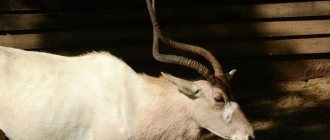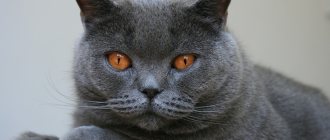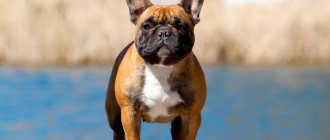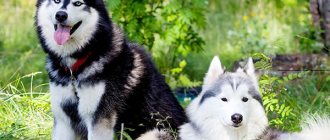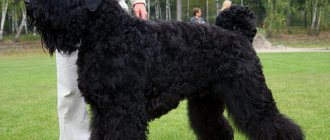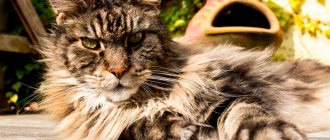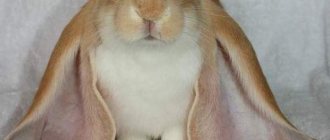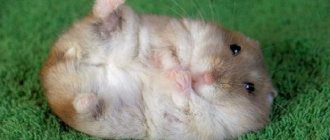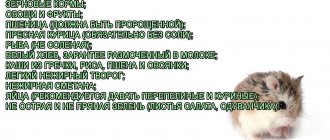- May 11, 2019
- Rodents
- Liya Naumova
The territory of deserts and semi-deserts is occupied by an unusual animal. If you look at the picture, the jerboa has a certain resemblance to mice. But this rodent has significant differences, for example, large ears and short forelimbs. This animal is a mammal and inhabits almost all continents on the planet. So, who is the jerboa?
Range, habitats
What is worth envying other animals among jerboas is their prevalence in completely different living conditions. They live on almost all continents, where there are steppes, deserts and semi-deserts. These regions include North Africa to sub-Saharan Africa, southern Europe, and Asia north of the Himalayas.
However, jerboas can be found even in forest-steppes and mountainous areas. Some subspecies live even at an altitude of up to 2 thousand meters above sea level. In Russia you can find some representatives of the genus: the large jerboa, the small jerboa, the jumping jerboa, the common eurasian emoji, the bushy jerboa and the five-fingered jerboa.
Return to content
Lifestyle
Large eyes and the size of the ears indicate that jerboas are nocturnal inhabitants . They leave their burrows about half an hour after sunset, and search for food all night. To do this, they can walk up to five kilometers. Before dawn, the animal returns to its hole, where it sleeps all day.
Jerboas have four types of burrows:
- The permanent burrow is equipped with several entrances. The main entrance has a slope, and the rest approach almost to the surface and are spare. The main passage leads to the living chamber, in which the animal, using crushed blades of grass, makes a “bed” for itself.
- Temporary daytime burrows. The length of such dwellings is from 20 to 50 cm. To maintain humidity and coolness in them, the entrance is sealed with a sand or earthen plug.
- Rescue holes. These are simple passages in which the animals hide. Their depth is from 10 to 20 cm.
- Wintering burrows. Such dwellings have a wintering chamber and underground storage rooms at a depth of 1.5-2.5 meters.
During the winter season, many species of jerboas hibernate . This happens around October and lasts for four months. If warming suddenly occurs in winter, the animals may wake up for a short time.
Jerboa diet
The daily food intake for a jerboa is 60 grams. Their diet includes seeds and roots of plants, which they obtain by digging holes.
They enjoy eating insect larvae. They love to feast on fruits, cereal grains, and vegetables. Jerboas practically do not drink water! All moisture comes from plants.
Important! The tail of a jerboa says a lot about the state of health and nutrition. If it is round, then the animal eats well and regularly. The tail is thin, with protruding vertebrae, indicating exhaustion.
The diet consists mainly of seeds and plant roots . Their jerboas dig out, leaving holes. Insects and their larvae are also eaten. The animals practically do not drink water. They get moisture from plants. During the night, in search of food, one rodent can travel up to 10 km along its food trails.
One animal requires 60 g of various feeds per day. This population has a great influence on the soil and vegetation cover of deserts, semi-deserts and steppes, and also serves as food for local predators. At the same time, animals can spread dangerous infectious diseases, including the plague.
Return to content
Characteristic
The jerboa, no matter what species it belongs to, looks like a mouse.
It is distinguished from the latter only by its legs: the front ones are very short and the rodent practically does not use them when covering distances, and the rear ones are very elongated.
Appearance
All jerboas are small in size. Let's look at a detailed description of this animal:
- depending on the species, the animal’s body length can range from 6 to 26 cm;
- weight ranges from 25 to 300 g;
- the tail of this steppe rodent is always longer than the body - from 7 to 30 cm;
- the tip of the tail is decorated with a tassel painted black and white;
Interesting! The tail for the jerboa is a kind of rudder and balancer. In some cases, it visually signals that danger is approaching!
- the body is short;
- the hind limbs are strong, and their length can be several times greater than the length of the forelimbs;
- there are claws on the paws, they are well developed and shorter on the forelimbs than on the hind limbs;
- the head is round, the muzzle is slightly blunt;
- The shape of the ears is rounded, in some species they grow together into a tube at the base; depending on the species of the rodent, the length of the ears will be different - the large jerboa has very large ears, while the hairy jerboa has small ears;
- eyes are large;
- the neck is short and almost invisible from the outside;
- the body is usually covered with plain fur, colored sandy or light brown;
- the jaw consists of 16-18 teeth; The fangs can be white or yellow - with them the jerboa chews food and loosens the soil.
The most recognizable varieties of jerboas are: the great jerboa, or steppe jerboa, the long-eared, or Chinese, and the hairy jerboa.
Big jerboa
The largest representative of the family is the large jerboa. This rodent looks like a miniature hare.
The description of this animal will be as follows: its weight is about 300 g, and its body length reaches 20-26 cm. The tail of a large jerboa is long - about 30 cm, with a fluffy “tassel” at the end.
You can meet it on the territory of Eurasia in the driest regions - in the desert or steppe. This rodent moves very quickly, making long jumps. Sometimes its speed reaches 50 km/h.
With the onset of cold weather, the large jerboa goes into hibernation. At this time, he accumulates fat and doubles his body weight.
He is able to dig his holes for a long time, and even in dense soils he is not lazy in setting up a nest. A large jerboa is shown in the next photo.
This animal has a wide, somewhat elongated muzzle and three-toed feet on its hind legs
Long-eared jerboa
The long-eared, or Chinese jerboa, lives in China and Mongolia, prefers to live in the desert.
The body length of this small rodent is no more than 9 cm, the tail is long - about 16 cm, and the ears are huge compared to the body - they can reach up to 5 cm in length.
The length of the hind limbs of the Chinese jerboa, which allow it to jump far in length, is about 4.5 cm. Body weight varies from 24 to 38 g.
On a note! The Chinese jerboa is protected by law as it is an endangered species!
A characteristic feature of this variety of jerboas are the paws, which are covered with tufts of hair.
The jaw includes thin incisors and small premolars, one on each side.
The body of the long-eared jerboa is covered with light brown hair on the back and white on the belly.
As you can see in the photo below, the tail has fine hair and is the same shade as the fur on its back. “Tassel” with a black and white tuft.
The long-eared jerboa is nimble, small and very fast
Hairy jerboa
The hairy jerboa lives not only in the desert, but is also a resident of Tuva, the Lower Volga region and the Caspian region.
Its description: the body is from 10 to 14.5 cm long, the tail measures about 15 cm, the hind foot reaches 6.5 cm in length.
The head is round in shape, with relatively small ears located on it - about 1.5-2 cm, and such dimensions are very small compared to the ears of other varieties of jerboas.
The paws have three toes, they are covered with stiff hairs, and the soles of the hind limbs have thick bristles.
The toes of the hairy jerboa are approximately equal in length and only the middle one protrudes forward slightly. If this steppe animal places its paw on the sand, its imprint will have the shape of a trapezoid.
And when moving, the distance between the left and right paws is about 5 cm. There are yellow incisors on the jaw. The following photo clearly demonstrates a typical representative of this type of jerboa.
The hairy jerboa is capable of jumping long distances
Reproduction and offspring
Jerboas reach sexual maturity at the age of 6-7 months . And if they survive safely until this period, then the breeding season begins in the first spring or summer. The duration of pregnancy depends on the subtype, but on average it lasts no more than one month. The female bears 2-3 litters per year. One litter contains from 3 to 8 babies. For childbirth, jerboas create a separate burrow. From birth, the cubs are blind and bald, very similar to rat pups.
It’s also interesting how the female understands that “the time has come.” She, of course, has neither a clock nor a calendar. Most likely, the innate mechanism starts from the moment when babies begin to weigh 200-220 grams.
The mother cares for and protects the offspring for up to 3 months. Then her behavior changes dramatically. She becomes aggressive. This is how kids understand that the time has come to live independently. A change in weight and a decrease in living space in the burrow tell the mother that it is time to let the cubs go “free swimming.” She begins to show aggression, bite, drive away food.
Return to content
Description of the rodent
— Advertising —
The body length of jerboas varies from 4 to 25 cm. Weight is 200-300 g. The tail is usually longer than the body, 7-30 cm, with a flattened black and white tassel at the tip, which plays the role of a rudder during running and also serves as a visual aid. danger signal.
The body of the jerboa is short and short with long strong hind legs, which can be 4 times longer than the front ones. During slow movement, jerboas occasionally move on four legs, but in most cases they use only their hind legs. The length of the jump in some species reaches 3 m. The head is large, the muzzle is blunt. The ears are long, rounded, covered with sparse hairs. The eyes are large and the whiskers are long. The neck is very short.
The fur of jerboas is thick and soft. The upperparts are plain, brownish or ocher-sandy. The belly and paws are light.
Population and species status
Due to the large number of subspecies and wide geographical representation, we can say that the jerboa species as a whole is not experiencing a population crisis. In general, individuals reproduce stably. However, within the subspecies things are not so good.
Important! The marsupial jerboa, native to Australia, is an endangered species. The population has declined greatly. This is the only representative of its subspecies.
These cute little animals deserve attention and careful treatment, just like any other living thing on earth. They can rightfully be called builders, because, as you know, they build different homes for different tasks. This behavior is unique to animals.
Return to content
Red Book
Where jerboas live in Russia, and this is the Voronezh region, Usmansky Bor and Bogucharsky district, certain species of them are listed in the Red Book. The limiting factor was the reduction of habitat areas due to changes in the regime of agricultural use of territories. It was also influenced by weak population replenishment and slow development of young individuals to sexual maturity.
There are populations of the large jerboa in Russia in the European part, and these are the Moscow and Gorky regions. Their numbers increase closer to their southern habitats.
Similarity to a gourmet rat
A typical jerboa bears a striking resemblance to the funny animated character Ratatouille. He is just as fast, smart and spontaneous. Watching the life of this rodent is no less interesting than watching a fascinating cartoon by Brad Bird.
We suggest you read: Cough in a cat. Vet answers about causes and treatment
By the way, we strongly recommend that everyone watch “Ratatouille” in the original. The film is full of kindness, subtle humor and culinary delights. Gourmets will be delighted!
Life at home
Jerboas can adapt to life in captivity. Only the enclosure for keeping them must be large enough, made of metal mesh. This is if a ground hare is kept at home. The length of the cage should be up to two meters wide and one meter long. The height should also be up to 1 meter, since the animal loves to jump. At the bottom of the enclosure where the jerboa lives, you need to put dried turf in which it will dig holes. The roots found in the turf and grass will be used to make a nest. Sheep or camel wool won't hurt. The jerboa will place it in the nest.
For a medium-sized animal, it is enough to buy a large aquarium, in which turf is also placed, and for the inhabitants of sandy deserts, you need to pour sand, they love to swim in it. For dwarf animals, you can also create a habitat where the jerboa will also build a house for itself. You need turf with fine gravel and sand.
